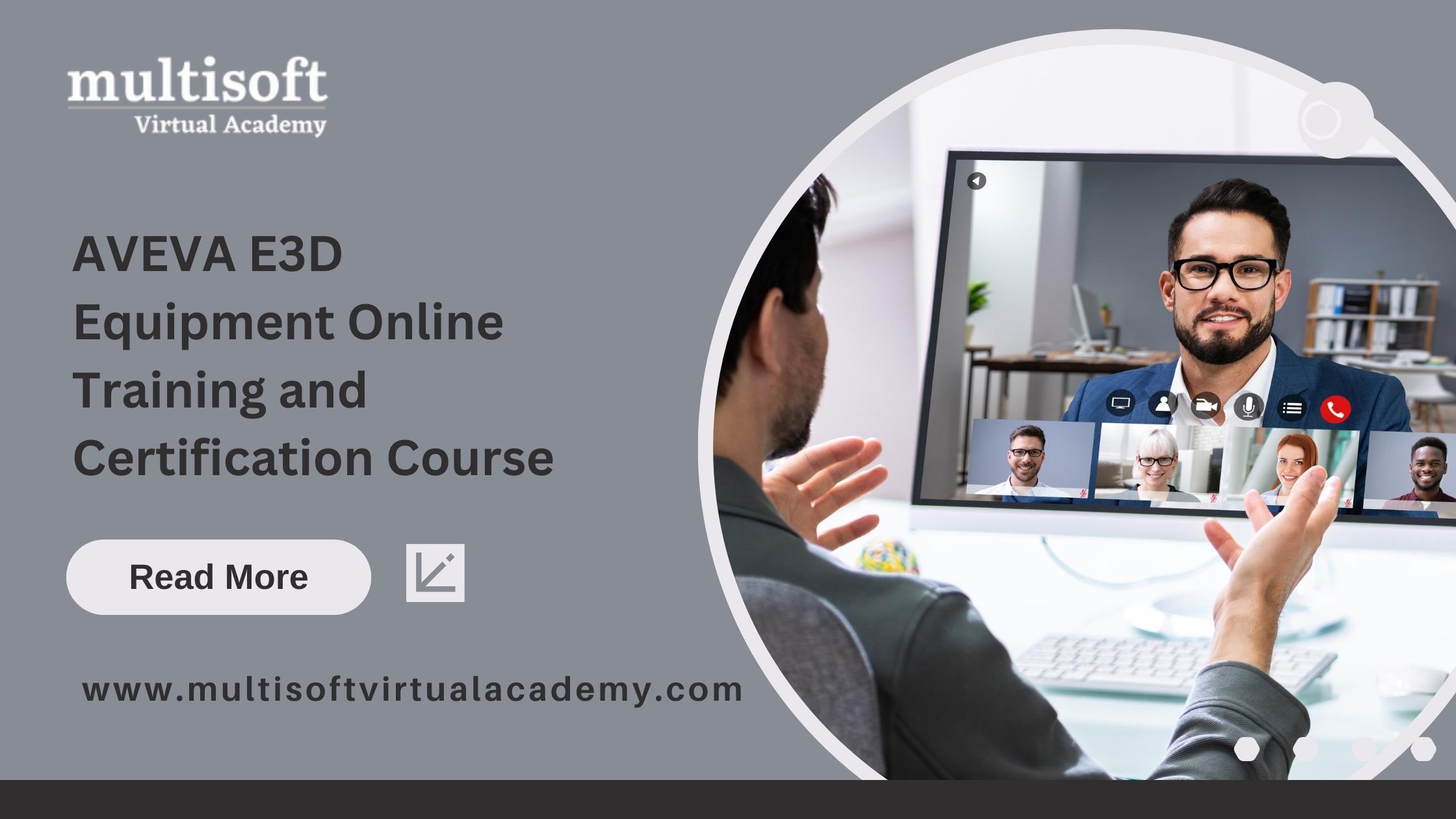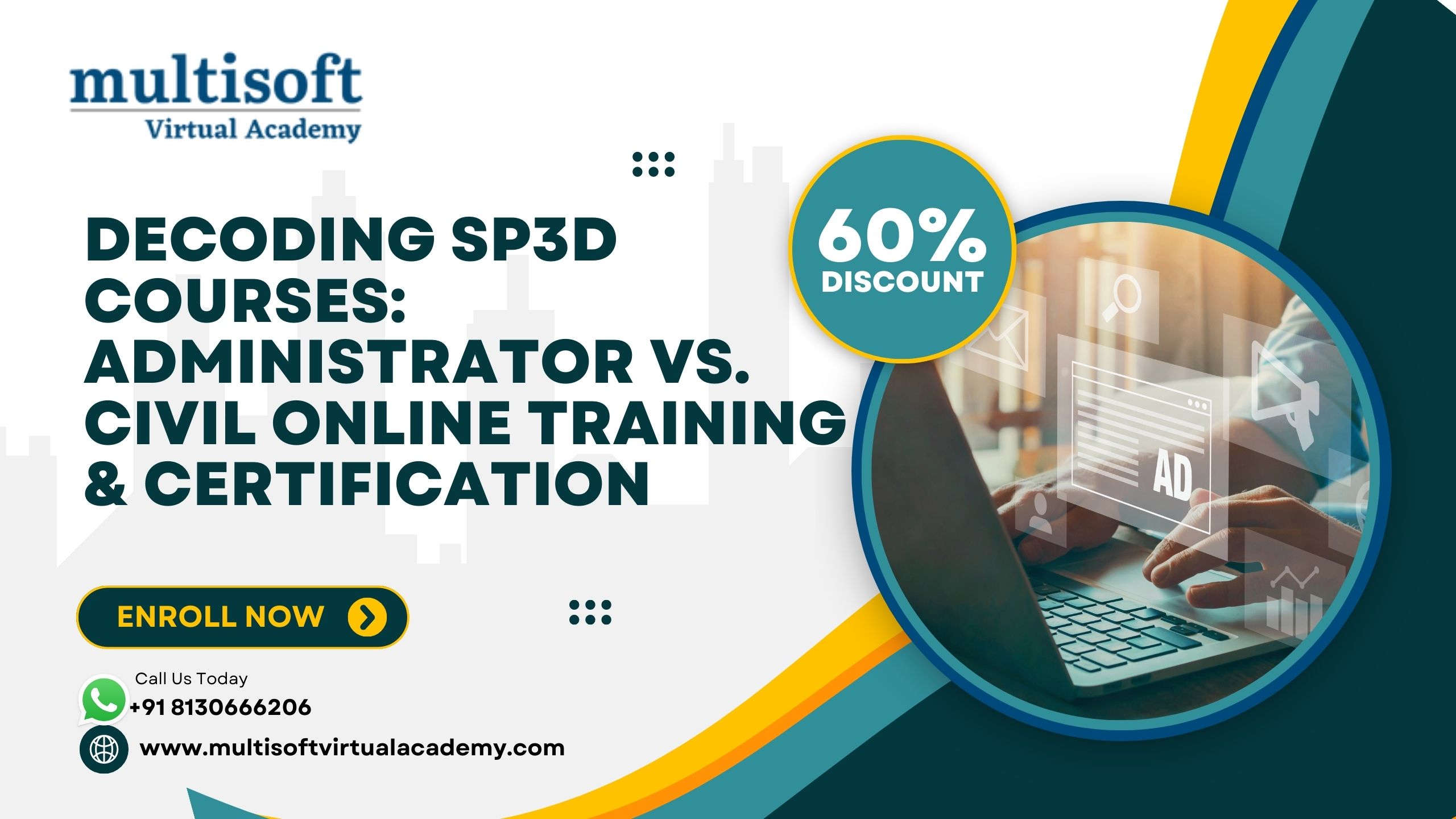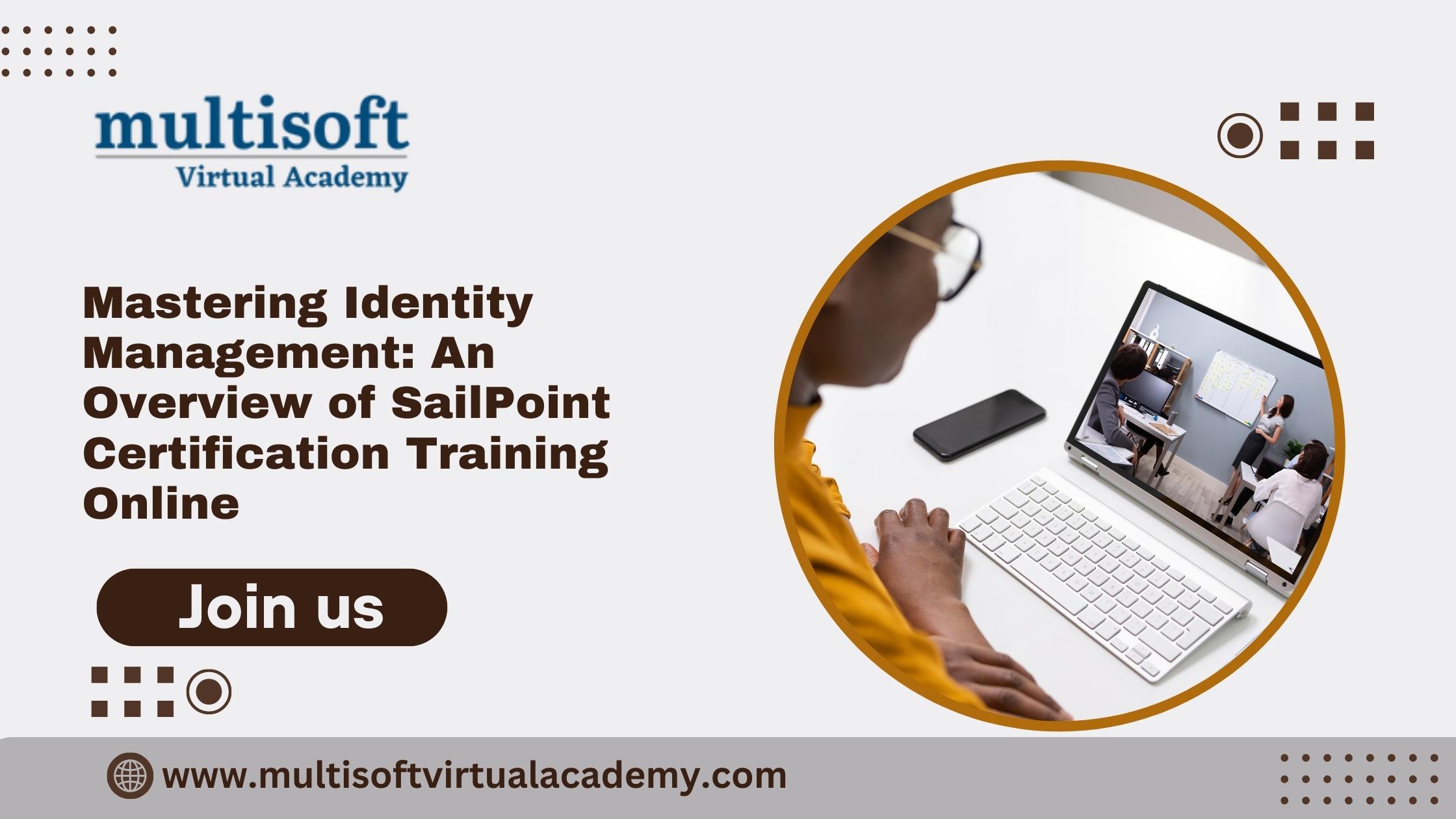PgMP Certification Training Course Tutorial
Course introduction
PgMP (Program Management Professional) certification training course by Multisoft Virtual Academy offers a comprehensive designed for professionals who manage multiple, complex projects to achieve strategic and organizational results.

The course covers all five domains of program management as outlined by PMI (Project Management Institute): Strategy Alignment, Program Life Cycle, Benefits Management, Stakeholder Engagement, and Governance. It also focuses on program management processes and activities, preparing students to handle the interdependencies between projects in a program. Real-life examples, case studies, and practice tests are part of the course to ensure students understand how theoretical concepts apply in practical scenarios. Students are also guided on how to navigate the PgMP certification process.
Upon completion of the course, participants will have a solid understanding of the principles of program management and be well-prepared to take the PgMP exam, paving the way for enhanced career opportunities in the field of program management.
Introduction to PMI standard of Program Management
The Project Management Institute (PMI) provides a standard of Program Management to guide program managers and organizations in the successful delivery of programs. This standard is encapsulated in the PMI's "The Standard for Program Management". The standard outlines the fundamentals of program management based on PMI's research and understanding of what constitutes good practices in the field. It provides guidelines, rules, and characteristics for project, program, and portfolio management.
In the standard, the responsibilities of a program manager are organized around five performance domains:
- Strategy Alignment: This domain includes understanding the organization's strategic objectives and aligning the program to meet these objectives.
- Benefits Management: This domain involves defining, creating, maximizing, and delivering the benefits provided by the program.
- Stakeholder Engagement: The program manager must effectively communicate and engage with stakeholders, managing their expectations and addressing their concerns.
- Program Governance: This involves the establishment and maintenance of program management infrastructure through the application of program governance practices.
- Program Life Cycle Management: The program manager oversees and controls all program activities from initiation to closure.
The PMI's standard of Program Management is recognized worldwide and is often a key reference in program management training and certification programs, including the Program Management Professional (PgMP) certification. It helps program managers and organizations enhance their ability to deliver complex, multiple related projects successfully, manage resources efficiently, and align results with strategic business goals.
Program Management Performance Domain
In program management, the term "performance domain" refers to a specific area of expertise or concentration that forms a significant part of the program manager's responsibilities. The PMI (Project Management Institute) outlines five performance domains in its Standard for Program Management, each representing a key aspect of effective program management.
The respective five domains are as follows:
1. Program Strategic Alignment
Strategic Alignment is one of the fundamental domains in the PMI's standard for program management. It involves ensuring that the program's objectives and activities are in line with the overarching strategic goals of the organization. At its core, strategic alignment is about defining the program so that it delivers the most value and supports the organization's long-term vision and mission. It involves understanding the business strategy, identifying program opportunities that align with this strategy, and translating the strategic objectives into program objectives.
Key activities under the strategic alignment domain include:
- Understanding Business Strategy: Program managers must understand the business strategy to align their programs effectively.
- Identifying Program Opportunities: The program manager identifies opportunities for programs that can help achieve the strategic goals of the organization.
- Developing the Program Roadmap: The program roadmap outlines the key stages of the program, their timelines, and how they contribute to the strategic objectives.
- Aligning Program and Project Goals: The program manager ensures that the objectives of each project under the program align with the program's goals, which in turn align with the organization's strategy.
2. Program Lifecycle Management
Program Lifecycle Management is one of the key performance domains outlined in PMI's standard for program management. This domain deals with the series of phases that a program goes through from its initiation to its closure. It includes tasks such as coordinating projects and activities within the program, managing risks and issues, and ensuring that the program delivers its intended benefits.
Key activities under the Program Lifecycle Management domain include:
- Initiation: This phase involves establishing the program charter, identifying the program's strategic objectives, defining the program scope, and establishing the program management plan.
- Planning: During this phase, the program manager develops detailed plans for the delivery of each component project, establishes governance structures, and sets up systems for risk, quality, and procurement management.
- Execution: This is the phase where the planned activities are carried out. The program manager coordinates the execution of the component projects, manages resources, and ensures effective communication among the program team and stakeholders.
- Control: In this phase, the program manager monitors and controls the program's progress. This involves tracking performance against plans, managing risks and issues, making necessary adjustments to keep the program on track, and ensuring that the program's benefits are being realized.
- Closure: In the final phase, the program manager wraps up all program activities, ensures that all program deliverables have been accepted, evaluates program performance, and captures lessons learned for future programs.
Program Lifecycle Management ensures that the program is efficiently managed from start to finish and delivers the expected benefits. It provides a structured approach to program management, ensuring that all necessary tasks are carried out, and that the program aligns with the organization's strategic goals.
3. Program Benefits Management
Benefits Management is a vital performance domain in program management, as outlined by PMI's standard. This domain is primarily concerned with defining, creating, maximizing, and delivering the benefits provided by the program. The goal of benefits management is to ensure that the program provides tangible benefits that align with the organization's strategic objectives.
Key activities within the Benefits Management domain include:
- Identifying and Defining Benefits: The program manager begins by identifying potential benefits that the program can deliver. This could be financial benefits like increased revenue or cost savings, or non-financial benefits like improved customer satisfaction or increased operational efficiency.
- Developing the Benefits Realization Plan: The program manager develops a plan that outlines how each benefit will be realized.
- Delivering Benefits: The program manager ensures that the actions defined in the benefits realization plan are carried out. This involves coordinating program activities, managing resources, and addressing any issues that might affect the delivery of benefits.
- Tracking and Reviewing Benefits: The program manager tracks the realization of benefits against the benefits realization plan.
- Transitioning and Sustaining Benefits: Once the benefits are realized, the program manager oversees their transition to the business-as-usual environment.
Benefits Management ensures that the program delivers value to the organization and contributes to the achievement of strategic objectives. It provides a structured approach to managing benefits, ensuring that they are clearly defined, effectively delivered, and accurately measured.
4. Program Governance Performance Domain
Program Governance is one of the fundamental domains in the PMI's Standard for Program Management. It involves establishing and maintaining a robust program management infrastructure, which enables the successful execution of the program. The governance framework provides a clear structure for decision-making, roles and responsibilities, oversight controls, and managing program resources.
Key activities under the Program Governance domain include:
- Establishing the Governance Framework: The program manager establishes a governance framework that outlines the program's structure, roles and responsibilities, decision-making processes, and oversight mechanisms.
- Defining Roles and Responsibilities: Clear roles and responsibilities are defined for the program manager, program team, stakeholders, and other parties involved in the program. This helps to ensure accountability and clear lines of communication.
- Establishing Oversight Controls: Oversight controls are put in place to monitor the program's performance, manage risks, and ensure compliance with organizational policies and standards.
- Managing Program Resources: The program manager ensures that the program has the necessary resources, including personnel, finances, and physical resources, to successfully execute the program.
- Monitoring and Adapting the Governance Framework: The program governance framework isn't static. It's monitored and adjusted as needed throughout the life of the program to ensure it remains effective.
Effective program governance provides a strong foundation for program success. It provides a clear structure and processes for managing the program, reduces risks, improves communication and coordination, and ensures that the program aligns with organizational strategies and goals.
5. Program Stakeholder Management
Stakeholder Management is a crucial performance domain in the PMI's standard for program management. It focuses on identifying, engaging, and managing relationships with individuals or groups
who have a stake in the program's outcome. These stakeholders can influence, or be influenced by, the program, and their engagement is critical to the program's success.
Key activities in the Stakeholder Management domain include:
- Identifying Stakeholders: The first step in stakeholder management is to identify all relevant stakeholders. These may include internal stakeholders like employees and managers, and external stakeholders like customers, suppliers, regulatory bodies, and the public.
- Analyzing Stakeholders: Once stakeholders are identified, the next step is to analyze their interests, influence, expectations, and potential impact on the program.
- Developing the Stakeholder Engagement Plan: Based on the stakeholder analysis, the program manager develops a stakeholder engagement plan.
- Engaging Stakeholders: The program manager implements the stakeholder engagement plan, communicating regularly with stakeholders, managing their expectations, and addressing their concerns.
- Monitoring and Adjusting Stakeholder Engagement: The program manager regularly reviews and adjusts the stakeholder engagement plan and strategies based on feedback from stakeholders, changes in the program, or changes in the stakeholder environment.
Effective stakeholder management ensures that stakeholders are appropriately engaged, their interests are taken into account, and their issues are addressed promptly. This increases the chances of program success, as it improves stakeholder satisfaction, reduces risks, and enhances the program's reputation and acceptance.
Conclusion
The PgMP software training and the PgMP certification encompasses an array of vital topics that are crucial for professionals in the engineering and project management fields. The PDMS software online training, by Multisoft Virtual Academy, is designed to cover a comprehensive understanding of the software interface, equipment and structural modeling, HVAC and electrical modeling, clash detection, and more. The PDMS software certification training follows the PMI's standard of Program Management and delves into key performance domains such as strategic alignment, benefits management, stakeholder management, program governance, and program lifecycle management.
Both these training programs are geared towards enhancing the skills of professionals, allowing them to execute their roles more effectively, and contribute positively to their respective fields.









































 Join our Live Instructor-Led online classes delivered by industry experts
Join our Live Instructor-Led online classes delivered by industry experts